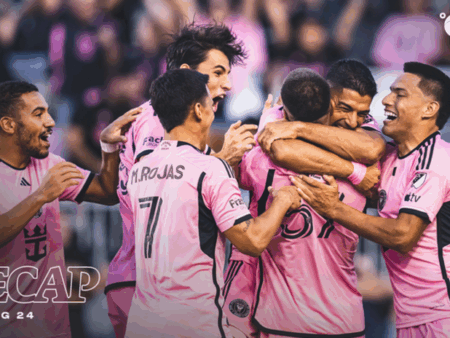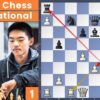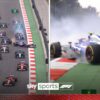Formula 1 is a sport perpetually caught between individual brilliance and team strategy. Nowhere is this tension more palpable than when two teammates, both at the pinnacle of their game, find themselves battling for supremacy within the same garage. The recent Singapore Grand Prix provided a stark, albeit familiar, illustration of this quandary, with McLaren`s `Papaya Rules` facing their ultimate test amidst the fierce rivalry between Lando Norris and Oscar Piastri.
The Genesis of the “Papaya Rules”
McLaren, a team steeped in racing history, has, for much of the current season, found itself in the enviable position of having two highly competitive drivers consistently at the sharp end of the grid. Oscar Piastri, currently leading the championship, and Lando Norris, his closest challenger, have pushed each other, and the team, to new heights. Such a scenario, while thrilling for fans, presents a unique management challenge for team principal Andrea Stella and chief executive Zak Brown.
To navigate this high-stakes internal competition, McLaren introduced an evolving code of conduct, affectionately dubbed the “Papaya Rules.” The primary directive? Avoid contact between the two cars at all costs. A sensible enough proposition on paper, designed to protect precious constructor points and expensive machinery. However, as any seasoned F1 observer knows, the asphalt often has a way of mocking even the most meticulously drafted regulations.
Singapore: A Test of Loyalty and Logic
The streets of Singapore are not known for their generosity, especially on the opening lap. It was here that the “Papaya Rules” encountered their most significant challenge. During an aggressive first-lap maneuver, Norris and Piastri made contact. Piastri, believing a clear breach of protocol had occurred, promptly radioed the pit wall, requesting that Norris cede the position. His logic was simple: rules were rules, and contact was forbidden.
However, the pit wall`s response was swift and definitive: no position swap. Stella and Brown later clarified their stance, explaining that Norris`s contact with Piastri was deemed a reactive measure, an attempt to avoid an initial skirmish with Max Verstappen ahead. This interpretation, while perhaps technically sound, left a lingering question mark over the practical application and perceived fairness of the “Papaya Rules.” When do rules bend to the heat of battle, and when do they stand firm?
The Eternal F1 Conundrum: Team vs. Individual
This incident is but the latest chapter in Formula 1`s long-running saga of team orders. From Ferrari`s infamous “Fernando is faster than you” radio call to the multi-21 saga at Red Bull, teams have consistently wrestled with the delicate balance between fostering raw competition and enforcing strategic harmony. On one hand, F1 is a team sport, with millions invested in constructors` championship points. Collisions between teammates are an unmitigated disaster, costing points, prestige, and often, significant repair bills.
On the other hand, the very essence of racing lies in the drivers` relentless pursuit of victory. To artificially restrain that competitive spirit, to dictate the outcome from the pit wall, can feel like a betrayal of the sport`s ethos. It risks demoralizing drivers, alienating fans, and ultimately, producing a less exciting spectacle. The irony is not lost: teams hire the most competitive individuals on the planet, then ask them to temper that very nature for the collective good. It`s akin to hiring two hungry lions and asking them to share a single steak politely.
The Path Forward for McLaren
With six rounds remaining and a mere 22 points separating Piastri and Norris, McLaren finds itself in a precarious position. The “Papaya Rules,” born of good intentions, now face scrutiny. If the team intervenes too much, they risk stifling the very talent and competitive drive that has brought them success. If they intervene too little, they risk further intra-team incidents and potential championship squandered.
Experts like Jamie Chadwick and Ted Kravitz suggest that McLaren might be better served by stepping back and allowing their prodigious talents to race. This hands-off approach, while fraught with risk, might ultimately be the most authentic, and perhaps even the most effective, way to manage such a high-caliber rivalry. The drivers are, after all, professionals. They understand the stakes, even if their instincts occasionally override their collective obligations.
Conclusion: The Enduring Battle of Wills
The “Papaya Rules” at McLaren are more than just a code of conduct; they are a metaphor for the enduring struggle at the heart of Formula 1. It is a sport where engineers strive for perfection, strategists plot every move, and millions hang on every decision. Yet, at its core, it remains a battle of wills between extraordinary individuals, pushing limits in machines that are designed to be faster than anything else on Earth. As the season progresses, McLaren`s handling of Piastri and Norris will not only define their championship aspirations but also offer a compelling case study in the delicate art of managing competitive genius.








